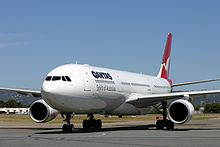This article includes a list of general references, but it lacks sufficient corresponding inline citations. (August 2009) |

A single-event upset (SEU), also known as a single-event error (SEE), is a change of state caused by one single ionizing particle (e.g. ions, electrons, photons) striking a sensitive node in a live micro-electronic device, such as in a microprocessor, semiconductor memory, or power transistors. The state change is a result of the free charge created by ionization in or close to an important node of a logic element (e.g. memory "bit"). The error in device output or operation caused as a result of the strike is called an SEU or a soft error.
The SEU itself is not considered permanently damaging to the transistors' or circuits' functionality, unlike the case of single-event latch-up (SEL), single-event gate rupture (SEGR), or single-event burnout (SEB). These are all examples of a general class of radiation effects in electronic devices called single-event effects (SEEs).
- ^ Neutron-Induced Single Event Upset (SEU) FAQ, Microsemi Corporation, retrieved October 7, 2018,
The cause has been traced to errors in an onboard computer suspected to have been induced by cosmic rays.